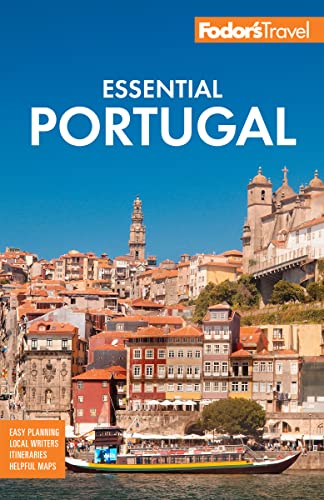Art, Architecture, and Azulejos
Portuguese artistic styles were inspired first by the excitement of the newly emerging nation and then by the baroque experimentation that wealth from the colonies made possible.
Painting came into its own in the 15th century with the completion of Nuno Gonçalves's Flemish-inspired polyptych of São Vicente (St. Vincent), which portrayed the princes and knights, monks and fishermen, court figures and ordinary people of imperial Portugal. It's on display in Lisbon's Museu Nacional de Arte Antiga. The work of the next great Portuguese painter, the 16th-century Vasco Fernandes (known as Grão Vasco, or the Great Vasco), has an expressive, realistic vigor. His masterpieces are on display in Viseu.
The elaborate decoration that is the hallmark of Manueline architecture is inspiring in its sheer novelty. Structures are supported by twisted stone columns and studded with emblems of seaborne exploration and conquest—particularly under Dom Manuel I (1495–1521)—with representations of anchors, seaweed, and rigging mingling with exotic animals.
Following the discovery of gold in Brazil at the end of the 17th century, churches in particular began to be embellished in a rococo style that employed talha dourada (polychrome and gilded carved wood) to stupendous effect. There are superb examples at the churches of São Francisco in Porto and Santo António in Lagos, and at the Convento de Jesus at Aveiro. For rococo at its most restrained, visit the royal palace at Queluz, near Lisbon.
In the 18th century, the sculptor Machado de Castro produced perhaps the greatest equestrian statue of his time, that of Dom José I in Lisbon's Praça do Comércio. Domingos António Sequeira (1768–1837) painted prominent historic and religious subjects. Portrait and landscape painting became popular in the 19th century; works by José Malhoa and Miguel Ângelo Lupi can be seen in the Museu de José Malhoa in Caldas da Rainha. The Museu Soares dos Reis in Porto—named after the 19th-century sculptor of that name (1847–89)—was the country's first national museum. His pupil António Teixeira Lopes (1866–1942) achieved popular success and has a museum named after him in Vila Nova de Gaia, near Porto.
Of all Portugal’s artistic images, its azulejos (painted ceramic tiles) are perhaps the best known. It is thought the Moors introduced these tiles to Iberia, and although many are blue, the term "azulejo" may not come from azul, the Portuguese word for that color, but rather from the Arabic az-zulayj (little stones). By the 17th century whole panels depicting religious or secular motifs were common, for example at the Fronteira palace on the outskirts of Lisbon.
Tiles in a wide variety of colors adorn many fountains, churches, and palaces. The Paço Real (Royal Palace) in Sintra is one remarkable example of their decorative effect, but there are delightful combinations on the nation's quintas or solares (country residences) with interesting examples in the Minho region in the north. There are also well-preserved works on display in several museums, including Lisbon's Museu Nacional do Azulejo and Museu Nacional de Arte Antiga and Coimbra's Museu Machado de Castro.





